With our National Park business concluded in southern Florida (at least for the time being), we started driving north along the incredibly flat and open roads towards Lake Okeechobee, the life-preserving reservoir of the Everglades (and southern Florida). We could not, however, see into the Lake, as earthen walls have been built up to protect its all-important water. Heading northeast, we jumped back to the shore, even daring to go for a nighttime swim at a deserted beach.
After preparing some dinner, we went down to the water. At this point, we were far enough north from Miami and Daytona Beach to avoid most of its light pollution. The beach was dark (or as dark as can be expected on a Floridian beach…). The waves crashing in were loud, confused, and frothed white against the dark void of the ocean. Having spent many a night in Lake Superior, I immediately went for the water, playing in the surf. The invisible rip tides gently tugged me further and further from shore. I cautiously caught a wave back into shore, where Cami stood knowingly avoiding the lure of the tides. Despite the danger apparent in front of us, the power of the ocean felt all the more impressive in darkness. It was even more invisible than it is during the day. Afterwards, we utilized the beach showers to wash away the salt (and stink from the last few days), before returning to sit on the sands, watching the stars and listening to the waves tumble across the sands. I had never expected to feel solitude in Florida, but I did there. The humbling darkness swallowed up all of my ideas of invading lights and developments. Even though it was a publicly maintained and protected beach, the pounding of the ocean, the pull of its tides, and the expansive skies all felt wild.
Salt-free, we climbed back in the car and headed north until we reached a beachside community just south of Cape Canaveral. Home Depot provided a wonderfully quiet and peaceful berth for the night.

Having driven late into the night, we slept in before continuing north towards Cape Canaveral. To find the National Seashore, however, turned out to be quite a chore. Before we finally made it, we accidentally blundered through a major cruise ship port, a naval base, and the NASA employee entrance. I guess paper maps can make things difficult every now and then… Once we were back on track, we roamed the seashore stopping to spot wild birds, manatees, and turtles. Without a way to get clean afterwards, we opted out of one final Atlantic swim, clambering north towards St. Augustine instead.
St. Augustine, one of the oldest European settlements in the United States, has more than its fair share of history and tons of worthy adventures. Our schedule (and insane parking fees) did not permit much exploration, but we did get a few minutes to check out a very lame visitors center and to sample some very delicious hot sauces. I will forever associate St. Augustine with a delicious honey barbecue sauce…
Jacksonville was our final destination for the day. There, we met up with a few of Cami’s friends and shared a tapas-style dinner before heading off to a kickball game. Cami and I, having done our own research before coming to the city, decided to pass up on a trendy cinema that offered vegan treats alongside contemporary films. Even though we didn’t have time for a movie, we did grab some cheese fries and Twinkies before heading off for the kickball game. Holy wow. They were delicious. I spent the next hour or so alternating between playing center field and stuffing my face with cheesy goodness.

In the morning, we swung by an amazing vegan bakery, Sweet Theory Baking Co., and spent far more than we should have on treats for the next few days. Sufficiently stuffed and hyped up on sugar, we drove to Cumberland Island, Jekyll Island, and Tybee Island before turning northwest towards Columbia, South Carolina and our next National Park, Congaree.
One of the more recent additions to the National Park family, Congaree’s past stretches far into the past. The result of yet another grassroots campaign, Congaree earned federal protection in 2003. Its designation as the largest surviving area of bottomland hardwood forest remaining in the United States must have made the decision relatively simple. The parks roughly 27,000 acres are home to large tracts of old growth forest, including many Champion trees. Most famously, the tallest Loblolly Pine alive, at a height of 169 feet, calls the park home.

Like the Everglades, Congaree is also a floodplain for the Congaree River. When it overflows, waters flow effortlessly through this hardwood ecosystem. Luckily, Cami and I dodged many storms on our way north to Columbia, SC, but woke up to torrential rains on the day that we were supposed to go to Congaree. Unfazed, we headed for the visitor, realizing that we might be the only people in the park that day. The sleepy crew of rangers looked surprised when we walked in, but were totally thrilled to have company on such a saturated day. First stop, the film. We learned about the parks history as a battlefield in the Revolutionary War, as a refuge for escaped slaves from the South, as a homestead for freed slaves sharecropping after the war, and finally as a forest that faced potential destruction before the Sierra Club, among other organizations, fought for its salvation. The exhibits continued the discussion of this history, but, for me, the most impactful focused on the lifespan of a tree. I had naively assumed that its tree’s rings could easily measure a its lifespan, but I based that notion on the misconception that once a tree dies its life is over. Instead, the displays at Congaree describe the tree’s transition from a living being into a nutrient rich ecosystem as it rots away. Funny, how a simple change in perspective can be so mind blowing!

The rangers didn’t seem very hopeful for our visit, but told us that we could walk the boardwalk, but that most of it was underwater. Donning our rain jackets and flip flops, we headed down the boardwalk. In the torrential rains, it seemed like the entire park was alive with movement. The rain drops struck puddles, leaves, and wood, creating activity all around us. Eventually, the boardwalk sloped downwards and entered into a flowing river as far as we could see. Instead of turning around, we slipped out of our shoes and wandered deeper into Congaree. The boardwalk slowly disappeared beneath our feet, leaving us knee-deep in water. The leafy undergrowth was gone and the massive rain drops refracted and disturbed the light bouncing off of our watery path. The conditions were a photographers nightmare, but truly a marvel to behold. Eventually we found a bench that sat just above the water line, there we sat, silently listening to the mutterings of the forest around us. I can’t imagine a more magical way to see this park. Our access may have been wildly limited, but I doubt many people have seen Congaree the way we have.

Our (very vertical) route north


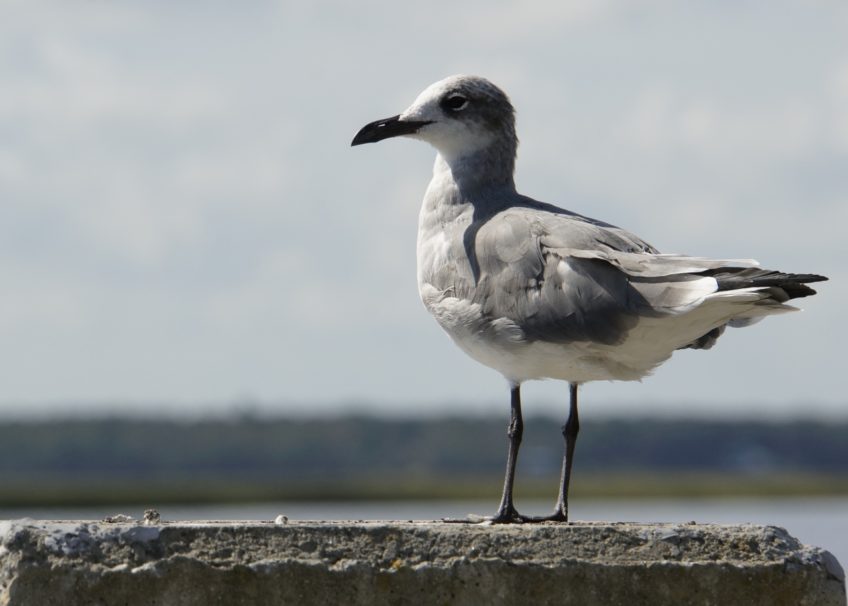

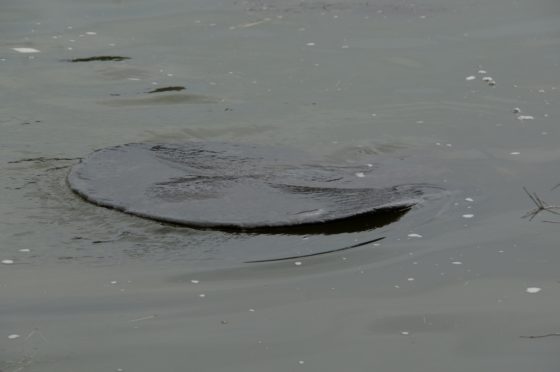
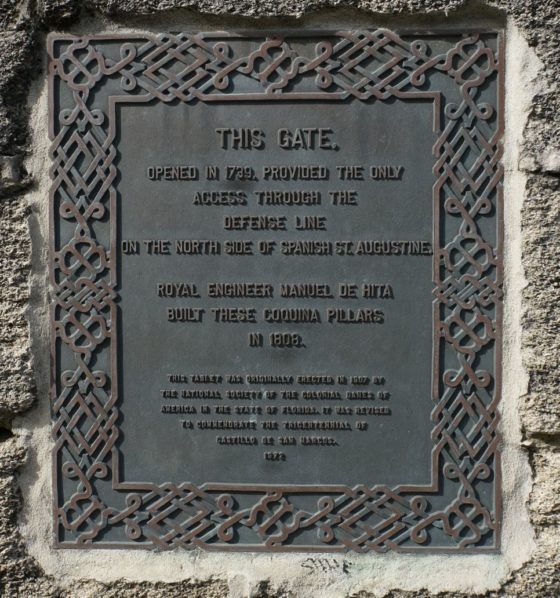
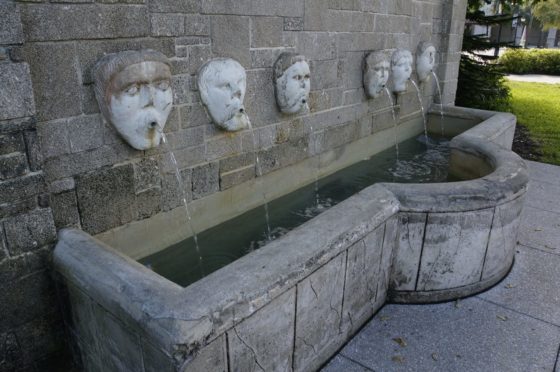
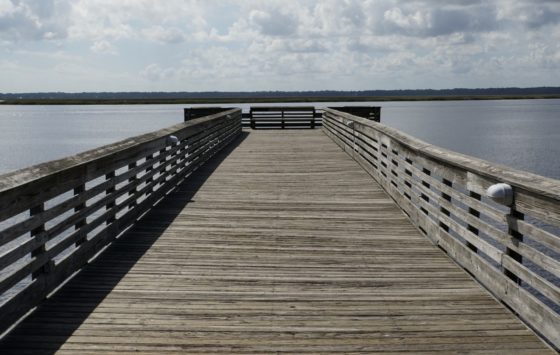

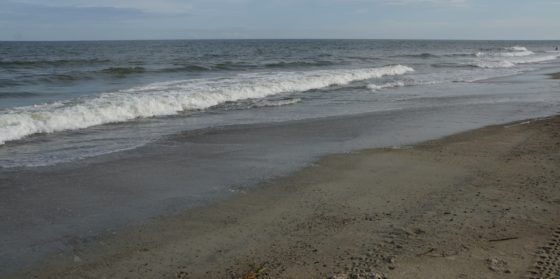

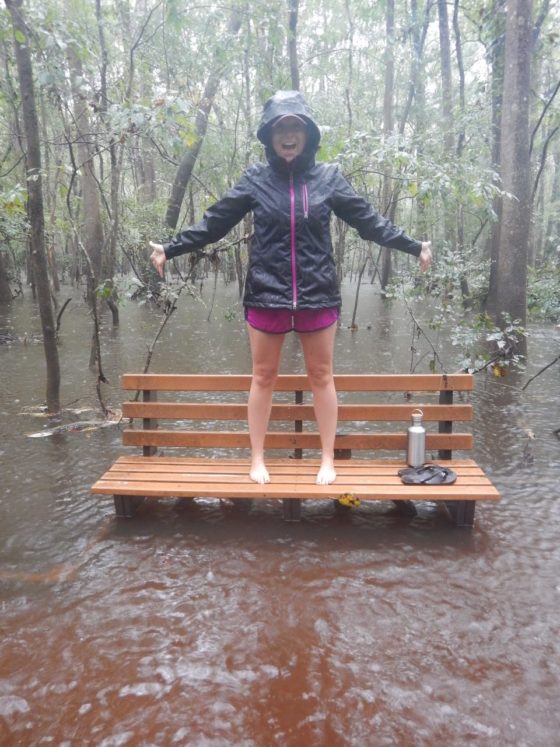
4 Responses
Daves Rossell
Hi, Jeremy, I have been greatly enjoying your peregrinations on this jaunt, and the walk across England. I am a facebook friend of your father’s, and study and teach architectural history with some of the broad cultural landscape emphasis that you both seem to share. I am writing here just because I wish I had contacted you sooner before you visited Tybee Island and the surrounding area, where I live. If you are ever back in this neck of the swamp, please feel free to look me up, and I’ll try to show you some things you have not seen. Safe travels!
jcronon
Ah I wish I would’ve known! It is definitely part of the Atlantic Coast that I would love to explore more thoroughly. I’ll keep you in mind should I ever find myself in the Southeast again!
Mom
What a magically drenched environment!
Jean Cronon
I am glad that I wasn’t on that trek through the water with it getting deeper and deeper. I am also glad that Cami was with you because that wouldn’t been any fun alone.